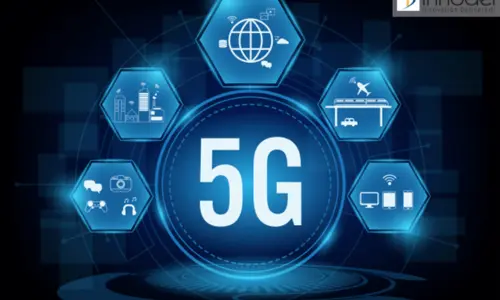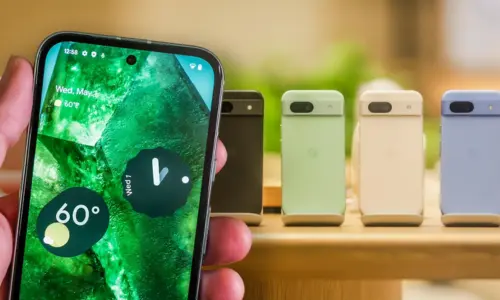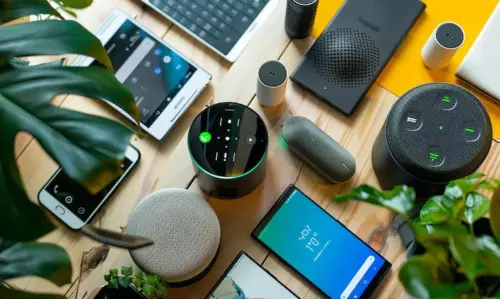How 5G Technology is Revolutionizing Communication Worldwide
The advent of 5G technology is one of the most significant leaps in telecommunications, setting the stage for a revolution in how the world communicates. Offering faster data speeds, lower latency, and the ability to connect more devices simultaneously, 5G promises to reshape not only how we communicate but also how industries operate, from healthcare to manufacturing. This article explores the transformative power of 5G technology, its global implications, and how it is fundamentally changing the way we interact in the digital world.
1. What is 5G Technology?
1.1 Defining 5G
5G, short for the fifth generation of mobile networks, is the latest evolution in wireless technology. It succeeds 4G LTE, providing much faster speeds, reduced latency, and the capacity to connect a vast number of devices at once. While 4G networks offer speeds in the range of 100 Mbps, 5G can reach up to 10 Gbps, allowing users to download large files in seconds, stream high-definition videos without buffering, and support a new generation of smart devices.
1.2 How 5G Works
5G technology operates on three spectrum bands: low-band, mid-band, and high-band (also known as millimeter-wave). Low-band frequencies offer broad coverage but slower speeds, while mid-band frequencies balance speed and coverage. High-band frequencies provide ultra-fast data rates but with shorter range. By using a combination of these bands, 5G can deliver fast, reliable, and widespread connectivity, even in densely populated urban areas.
2. The Key Benefits of 5G Technology
2.1 Ultra-Fast Data Speeds
One of the most noticeable advantages of 5G is its lightning-fast data speeds. With 5G, users can experience speeds up to 100 times faster than 4G. This allows for real-time video streaming, cloud gaming, and instant file sharing, enabling a seamless online experience that was previously unattainable with older networks.
2.2 Low Latency for Real-Time Communication
5G reduces latency to as low as 1 millisecond, compared to 50 milliseconds with 4G. This near-instantaneous response time is critical for applications that require real-time communication, such as autonomous vehicles, virtual reality (VR), and remote surgeries. In these cases, even a slight delay could result in errors, making low latency a game-changer for industries relying on precision and timing.
2.3 Massive Device Connectivity
5G networks can support a significantly larger number of connected devices per square kilometer than 4G. This is particularly important for the rise of the Internet of Things (IoT), where billions of devices, from smart homes to autonomous vehicles, will need to communicate with each other simultaneously. 5G provides the bandwidth necessary for this level of connectivity, ensuring that devices can operate efficiently without network congestion.
3. Revolutionizing Communication Across Industries
3.1 5G in Healthcare
One of the most exciting applications of 5G is in the healthcare sector. Telemedicine, remote surgeries, and real-time health monitoring are becoming more viable due to 5G’s low latency and high bandwidth. Surgeons can perform complex procedures remotely with the help of robotic systems, as 5G ensures that data is transmitted in real time without lag. Wearable health devices are also benefiting from 5G, as they can send critical data to healthcare providers instantly, improving patient outcomes through proactive care.
3.2 Transforming the Automotive Industry
The automotive industry is undergoing a major shift with the introduction of autonomous vehicles, and 5G is a crucial enabler of this transformation. Self-driving cars rely on fast, real-time communication with other vehicles and road infrastructure to make split-second decisions. 5G’s low latency ensures that autonomous systems can detect obstacles, navigate traffic, and avoid collisions efficiently. Furthermore, 5G-powered vehicle-to-everything (V2X) communication allows vehicles to interact with traffic lights, road signs, and even pedestrians, making the vision of smart cities closer to reality.
3.3 Enhancing Manufacturing and Industry 4.0
Manufacturing is also being revolutionized by 5G, enabling the rise of Industry 4.0, or the smart factory. 5G allows for the use of automated robots, AI-powered systems, and real-time monitoring in manufacturing processes. Machines on the factory floor can communicate with each other instantaneously, optimizing production lines, reducing downtime, and enhancing overall efficiency. This interconnectedness, powered by 5G, is paving the way for fully autonomous factories that can operate with minimal human intervention.
4. Impact of 5G on Consumer Communication
4.1 The Future of Mobile Communication
For the average consumer, 5G brings significant improvements in mobile communication. Video calls will become smoother, even in areas with high network congestion, and cloud-based services will be more accessible. This means that users can run complex applications, such as video editing or gaming, directly from their smartphones without downloading heavy software, as 5G allows for real-time access to cloud computing resources.
4.2 AR and VR Experiences on the Rise
Augmented Reality (AR) and Virtual Reality (VR) technologies have long been limited by the capabilities of 4G networks. However, 5G unlocks the potential for immersive experiences with these technologies. Users can engage in virtual meetings, play AR-based games, or even attend live events through VR headsets with no noticeable lag or interruptions. 5G’s high bandwidth allows for higher-quality graphics and faster data transmission, making AR and VR more practical for everyday use.
4.3 Gaming and Entertainment Transformation
The gaming industry is set to benefit immensely from 5G technology. Cloud gaming platforms, such as Google Stadia and Microsoft’s xCloud, are becoming more prevalent, as 5G makes it possible to stream high-quality games without needing expensive hardware. This shift will allow users to access their favorite games instantly from anywhere, making gaming more accessible. Additionally, 5G’s low latency is crucial for competitive gamers, who rely on fast response times to perform well in multiplayer games.
5. Global Implications of 5G Technology
5.1 Bridging the Digital Divide
One of the most profound effects of 5G is its potential to bridge the digital divide. In many rural and underserved areas, access to high-speed internet has been limited by the lack of infrastructure. 5G’s ability to deliver high-speed wireless broadband to these regions could significantly improve access to education, healthcare, and economic opportunities for billions of people. With 5G, remote communities can participate in the global digital economy, reducing the gap between urban and rural areas.
5.2 Economic Growth and Job Creation
The deployment of 5G is expected to create millions of jobs globally, as it drives growth in industries such as telecommunications, manufacturing, and healthcare. According to some estimates, 5G could contribute up to $12 trillion to the global economy by 2035. New business models will emerge as companies explore the potential of 5G to deliver innovative services, such as smart home automation, personalized digital experiences, and AI-driven customer support.
6. Challenges and Concerns of 5G Rollout
6.1 Infrastructure Investment
While 5G promises to revolutionize communication, its implementation comes with significant challenges, particularly in terms of infrastructure investment. Building a 5G network requires installing thousands of small cells, which are necessary for the high-frequency millimeter waves used in 5G. This can be a costly and time-consuming process, especially in rural areas where the return on investment may not be immediately profitable.
6.2 Security and Privacy Concerns
As 5G connects more devices, the potential for security breaches and cyberattacks increases. The large-scale deployment of IoT devices, powered by 5G, creates a broader attack surface for hackers to exploit. Ensuring the security of these networks will require new protocols, encryption methods, and monitoring systems. Privacy concerns are also heightened as more data is collected and shared across devices, leading to calls for stronger data protection regulations.
Conclusion
5G technology is not just an upgrade; it represents a fundamental shift in how we communicate, work, and live. By enabling faster data speeds, ultra-low latency, and massive connectivity, 5G is revolutionizing industries, enhancing consumer experiences, and driving global economic growth. As we continue to unlock the full potential of 5G, its impact will be felt in every corner of the world, from smart cities to rural communities. The future of communication has arrived, and it’s more connected, efficient, and transformative than ever before.







